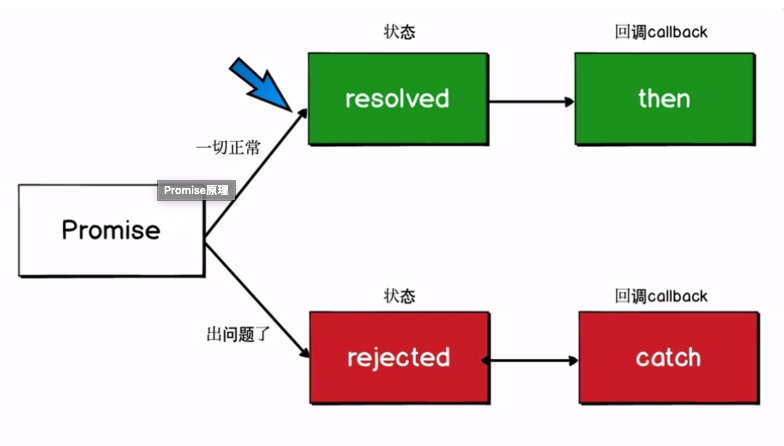 ES6核心特性
ES6核心特性
ES6核心特性

# 开发配置
使用babel编译ES6语法,如何用webpack实现模块化。
# babel
查询网址浏览器兼容性查询 (opens new window)
# 如何配置babel?
npm init
npm i babel-core babel-preset-es-2015 babel-preset-latest -D
//创建并配置.babelrc文件 存放在项目的根目录下
npm i babel-cli -g
babel-version
2
3
4
5
.babelrc的配置
//.babelrc文件
{
"presets": ["es2015", "latest"],
"plugins": []
}
2
3
4
5
# 如何配置webpack
npm i webpack bebel-locader -D
创建并配置 webpack.config.js//webpack.config.js文件与package.json同级
·配置 package.json中的scripts
·运行 npm start
2
3
4
module.exports = {
entry: './src/index.js',
output: {
path: __dirname,
filename: './build/bundle.js'
},
module: {
rules: [{
test: /\.js?$/,
exclude: /(node_modules)/,
loader: 'babel-loader'
}]
}
}
2
3
4
5
6
7
8
9
10
11
12
13
14
# 块级作用域
ES6提供let和const来代替var声明变量,新的声明方式支持大括号表示的块级作用域,这样带来的好处是:
- 不需要立即执行的函数表达式(IIFE)
- 循环体中的闭包不在有问题
- 防止重复声明变量
# 数组的扩展
- Array.from()
可以将类数组转化为数组,比如说HTMLCollection
- Array.of()
Array.of( )方法总会创建一个包含所有传入参数的数组,而不管参数的数量与类型
let items = Array.of(1, 2); // [1,2]
- 数组实例的find()和findIndex()
数组实例的find方法,用于找出第一个符合条件的数组成员。它的参数是一个回调函数,所有数组成员依次执行该回调函数,直到找出第一个返回值为true的成员,然后返回该成员。如果没有符合条件的成员,则返回undefined。
[1, 4, -5, 10].find((n) => n < 0) // -5
数组实例的findIndex方法的用法与find方法非常类似,返回第一个符合条件的数组成员的位置,如果所有成员都不符合条件,则返回-1。
[1, 5, 10, 15].findIndex(function(value, index, arr) {
return value > 9;
}) // 2
2
3
- 数组实例的includes()
[1, 2, 3].includes(2) // true
[1, 2, 3].includes(3, -1); // true
[1, 2, 3, 5, 1].includes(1, 2); // true
2
3
- 数组实例的 entries(),keys() 和 values()
for (let index of ['a', 'b'].keys()) {
console.log(index);
}
// 0
// 1
for (let elem of ['a', 'b'].values()) {
console.log(elem);
}
// 'a'
// 'b'
for (let [index, elem] of ['a', 'b'].entries()) {
console.log(index, elem);
}
// 0 "a"
// 1 "b"
2
3
4
5
6
7
8
9
10
11
12
13
14
15
16
17
# Class 和传统构造函数有何区别
从概念上讲,在 ES6 之前的 JS 中并没有和其他面向对象语言那样的“类”的概念。长时间里,人们把使用 new 关键字通过函数(也叫构造器)构造对象当做“类”来使用。由于 JS 不支持原生的类,而只是通过原型来模拟,各种模拟类的方式相对于传统的面向对象方式来说非常混乱,尤其是处理当子类继承父类、子类要调用父类的方法等等需求时。
ES6提供了更接近传统语言的写法,引入了Class(类)这个概念,作为对象的模板。通过class关键字,可以定义类。但是类只是基于原型的面向对象模式的语法糖。
# 对比在传统构造函数和 ES6 中分别如何实现类:
//传统构造函数
function MathHandle(x,y){
this.x=x;
this.y=y;
}
MathHandle.prototype.add =function(){
return this.x+this.y;
};
var m=new MathHandle(1,2);
console.log(m.add())
//class语法
class MathHandle {
constructor(x,y){
this.x=x;
this.y=y;
}
add(){
return this.x+this.y;
}
}
const m=new MathHandle(1,2);
console.log(m.add())
2
3
4
5
6
7
8
9
10
11
12
13
14
15
16
17
18
19
20
21
22
23
这两者有什么联系?其实这两者本质是一样的,只不过是语法糖写法上有区别。所谓语法糖是指计算机语言中添加的某种语法,这种语法对语言的功能没有影响,但是更方便程序员使用。比如这里class语法糖让程序更加简洁,有更高的可读性。
# 对比在传统构造函数和 ES6 中分别如何实现继承:
//传统构造函数继承
function Animal() {
this.eat = function () {
alert('Animal eat')
}
}
function Dog() {
this.bark = function () {
alert('Dog bark')
}
}
Dog.prototype = new Animal()// 绑定原型,实现继承
var hashiqi = new Dog()
hashiqi.bark()//Dog bark
hashiqi.eat()//Animal eat
//ES6继承
class Animal {
constructor(name) {
this.name = name
}
eat() {
alert(this.name + ' eat')
}
}
class Dog extends Animal {
constructor(name) {
super(name) // 有extend就必须要有super,它代表父类的构造函数,即Animal中的constructor
this.name = name
}
say() {
alert(this.name + ' say')
}
}
const dog = new Dog('哈士奇')
dog.say()//哈士奇 say
dog.eat()//哈士奇 eat
2
3
4
5
6
7
8
9
10
11
12
13
14
15
16
17
18
19
20
21
22
23
24
25
26
27
28
29
30
31
32
33
34
35
36
37
Class之间可以通过extends关键字实现继承,这比ES5的通过修改原型链实现继承,要清晰和方便很多。
# Promise的基本使用和原理
Promise是一部编程的一种解决方案,比传统的解决方案(回调函数和事件)更合理和更强大。
- Promise原理

# 几种遍历方式比较
- for of 循环不仅支持数组、大多数伪数组对象,也支持字符串遍历,此外还支持 Map 和 Set 对象遍历。
- for in循环可以遍历字符串、对象、数组,不能遍历Set/Map
- forEach 循环不能遍历字符串、对象,可以遍历Set/Map
# ES2018
Promise.prototype.finally()
Promise.prototype.finally()最终确定整个promises实现,允许你注册一个在一个promise被解决(被满足或被拒绝)时被调用的回调。
一个典型的用例是在fetch()请求之后隐藏一个微调器:而不是复制最后一个.then()和.catch()中的逻辑,现在可以将它放在.finally()